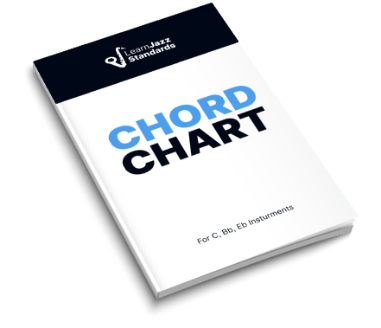The harmonic minor scale has a distinctive sound, which makes it a powerful musical choice for jazz improvisers. If you learn how to use the harmonic minor scale and its modes, you’ll be better able to articulate many of the awesome altered sounds found throughout jazz music.
Even if you don’t play jazz, the harmonic minor scale is also used in metal, rock, and classical music, so it’s a scale worth committing to memory!
In this article, we’ll go over everything you need to know about the harmonic minor—
- Harmonic minor scale theory
- The harmonic minor scale in all 12 keys (on piano and guitar)
- Harmonic minor modes and associated 7th chords
- And, most importantly, how to use the harmonic minor scale to supercharge your solos!
Be sure to listen to the audio examples so you can get these scales into your ears!
But, before diving in, I have a quick question—
Are you looking to take your jazz playing and musicianship to the next level by incorporating sounds like harmonic and melodic minor into your playing? If so, you must check out the Learn Jazz Standards Inner Circle.
The Inner Circle is designed to help you take your jazz playing to the next level and smash through the practice plateaus holding you back from realizing your full potential as a musician.
If you want to see measurable progress in your jazz playing—no matter what instrument you play—then check out everything the Inner Circle offers.
Table of Contents
Harmonic Minor Scale In Music Theory
Harmonic minor is its own unique pitch environment.
Like the major scale and other minor scales, the harmonic minor scale has its own modes and special intervallic relationships musicians can take advantage of to bring fresh and captivating ideas into their playing.
- First, we’ll compare the harmonic minor scale with the natural minor and melodic minor scales to see how it differs.
- Then, we’ll learn the harmonic minor scale in all 12 keys
- Next, we’ll explore harmonic minor modes and chord qualities
- Finally, we’ll go over how to use the harmonic minor scale to play over ii-V-I chord progressions
What Makes The Harmonic Minor Scale Different From Other Minor Scales?
The easiest way to conceptualize harmonic minor scales is to compare them with the natural minor scale and melodic minor scale.
Let’s briefly review both scales to compare them to the harmonic minor scale.
Natural Minor Scale
The natural minor scale, or Aeolian mode, is one of the major scale modes. Based on the sixth scale degree, the natural minor scale formula looks like this:
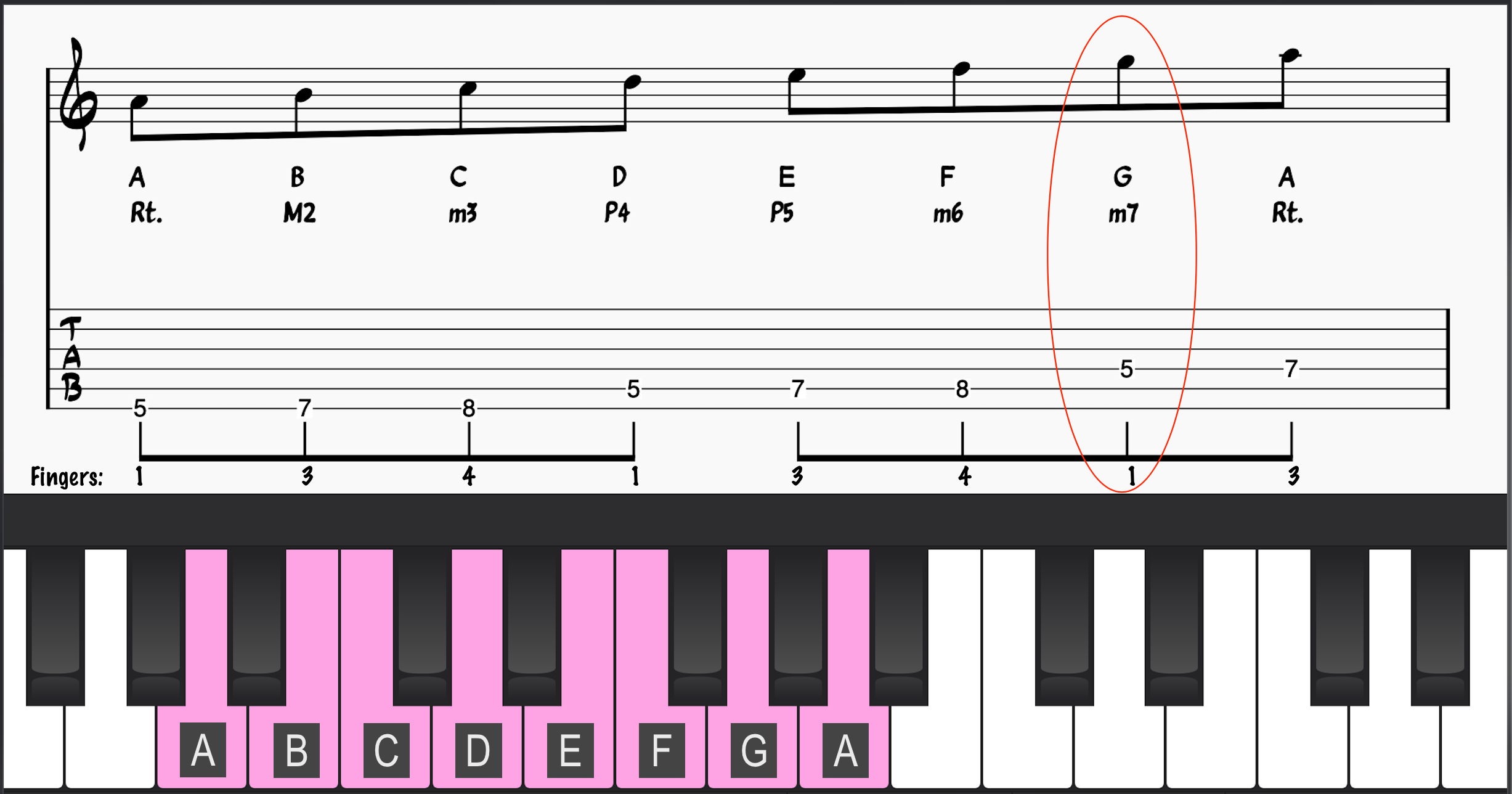
The formula for the natural minor scale is:
- Scale Degrees: 1-2-b3-4-5-b6-b7-1
- Intervals: Rt.-M2-m3-P4-P5-m6-m7-Rt.
- Notes: [A-B-C-D-E-F-G-A]
- Steps: (W)-(H)-(W)-(W)-(H)-(W)-(W)
If the natural minor scale is based on the sixth scale degree, then A natural minor would be in the key of C. C major is the relative major scale for A natural minor. For more on modes of the major scale, check out our ultimate guide to musical modes.
Melodic Minor Scale
The melodic minor scale is similar to the harmonic minor scale in that both have a natural seventh scale degree. However, the melodic minor scale has a major sixth scale degree, whereas the harmonic minor scale has a minor sixth.
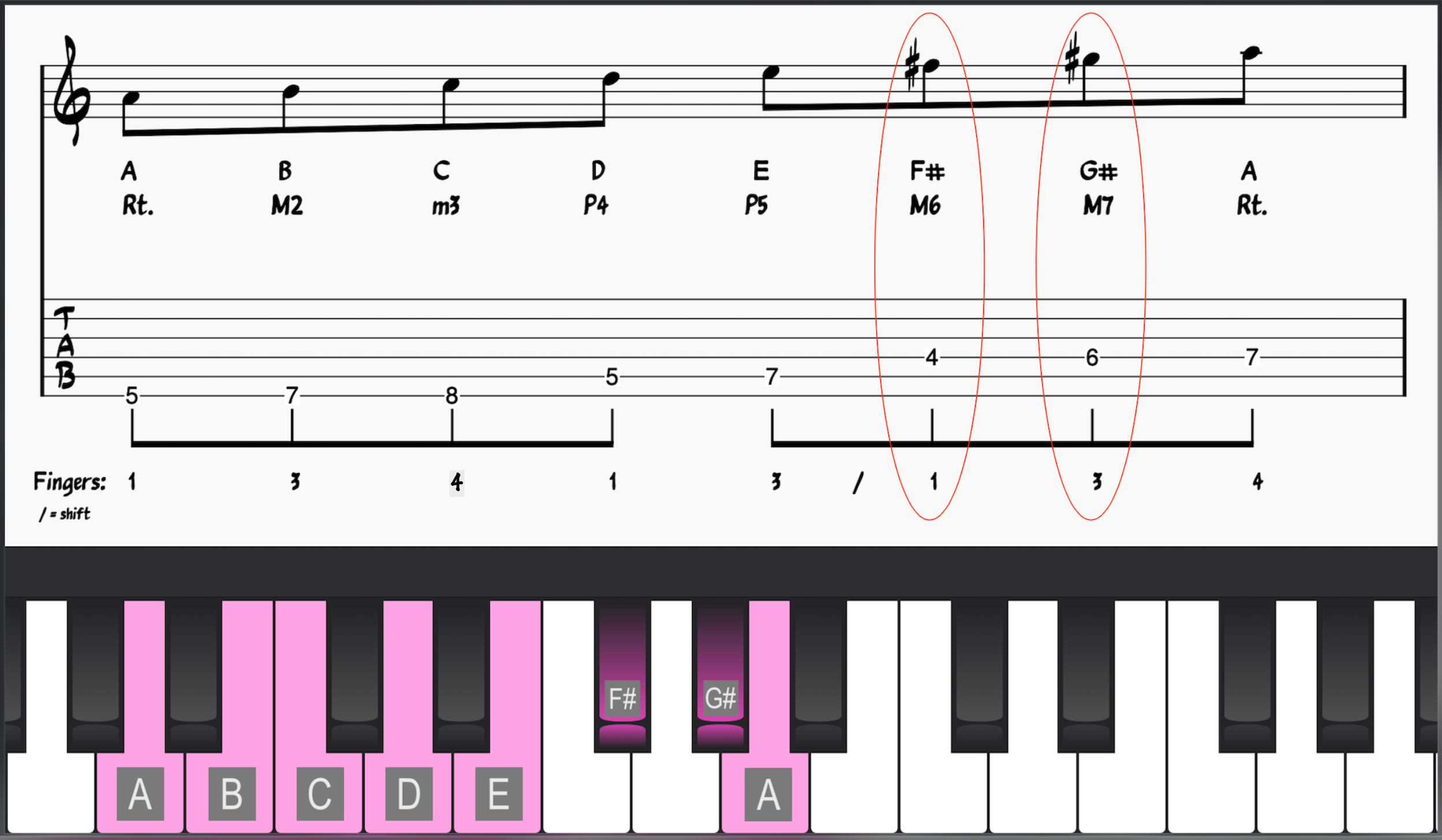
- Scale Degrees: 1-2-b3-4-5-6-7-1
- Intervals: Rt.-M2-m3-P4-P5-M6-M7-Rt.
- Notes: [A-B-C-D-E-F#–G#-A]
- Steps: (W)-(H)-(W)-(W)-(W)-(W)-(H)
In classical music theory, the ascending form of the melodic minor scale is different than the descending melodic minor scale. When descending, the sixth and seventh scale degrees are flattened by one-half step, making the scale a natural minor on the way down.
However, we play the ascending form in jazz, whether we ascend or descend.
For more on melodic minor scales, check out our article on the modes of melodic minor.
The Harmonic Minor Scale Formula
There is only one note difference between the natural minor scale and the harmonic minor version. The harmonic minor scale is like a natural minor scale with a raised seventh degree. It is identical to the natural minor scale except for the last note, which is normally a minor seventh scale degree.
Instead of [C-D-Eb-F-G-Ab-Bb-C], we instead get [C-D-Eb-F-G-Ab-B-C]:
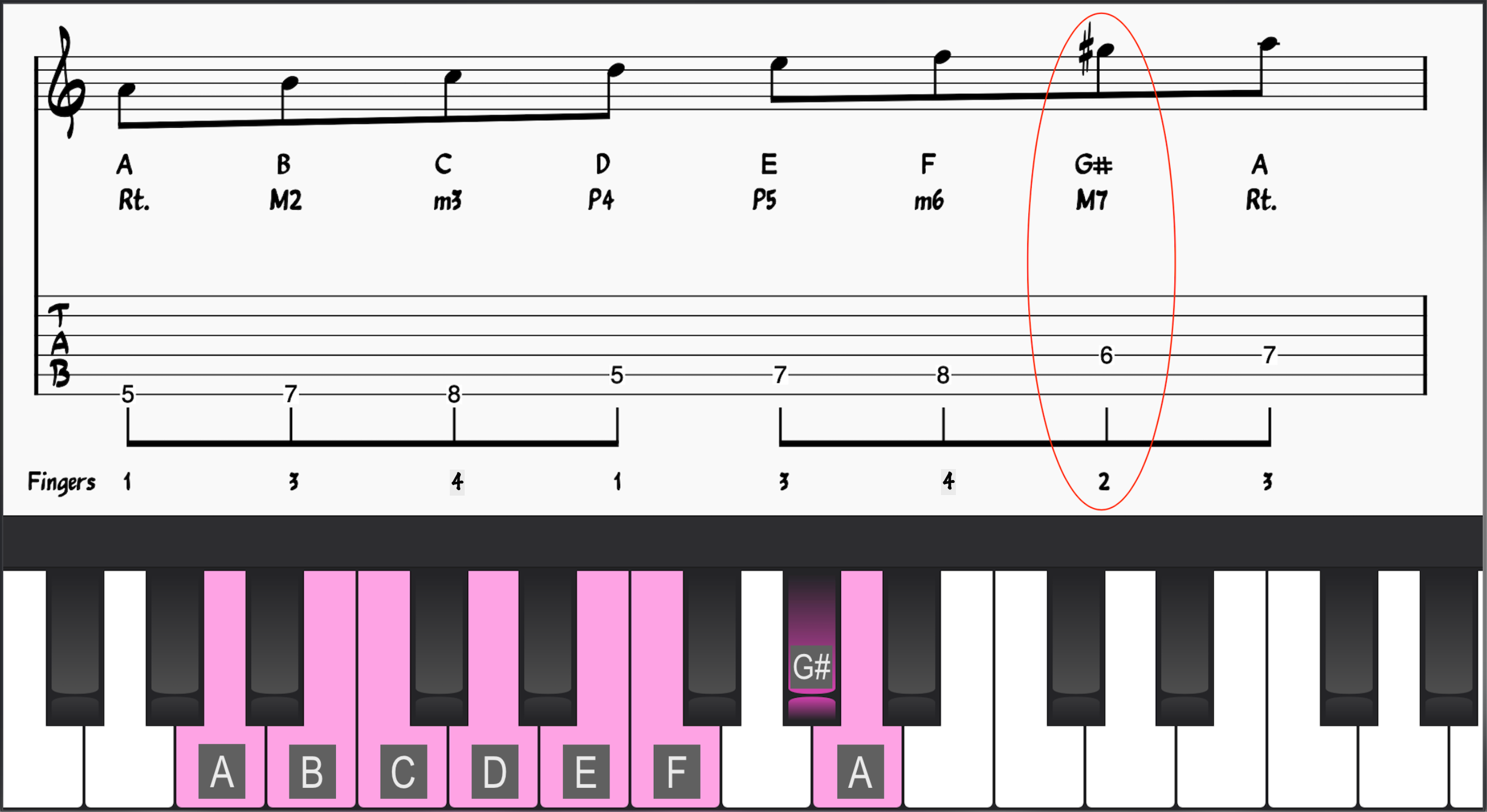
The formula for the harmonic minor scale is:
- Scale Degrees: 1-2-b3-4-5-b6-7-1
- Intervals: Rt.-M2-m3-P4-P5-m6-M7-Rt.
- Notes: [A-B-C-F-D-E-F-G#-A]
- Steps: (W)-(H)-(W)-(W)-(H)-(m3)-(H)
Notice the steps contain a minor third!
The distance between the 6th and 7th scale degrees is one minor third. This gives the harmonic minor scale its distinct sound. Now, let’s learn harmonic minor in all 12 keys on the piano and guitar!
Harmonic Minor Scale in All 12 Keys on Guitar and Piano
C Harmonic Minor Scale
- C-D-Eb-F-G-Ab-B-C
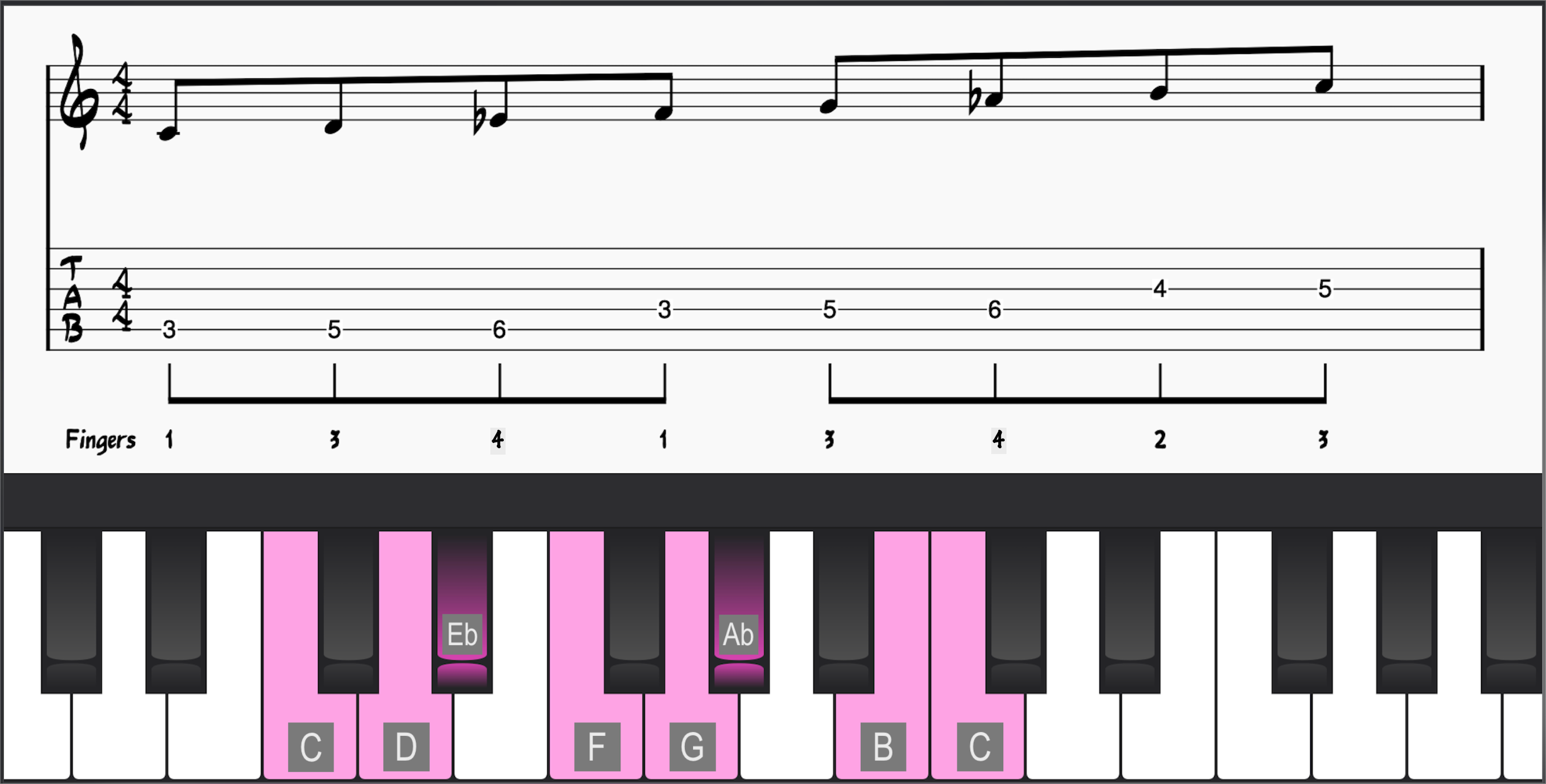
F Harmonic Minor Scale
- F-G-Ab-Bb-C-Db-E-F
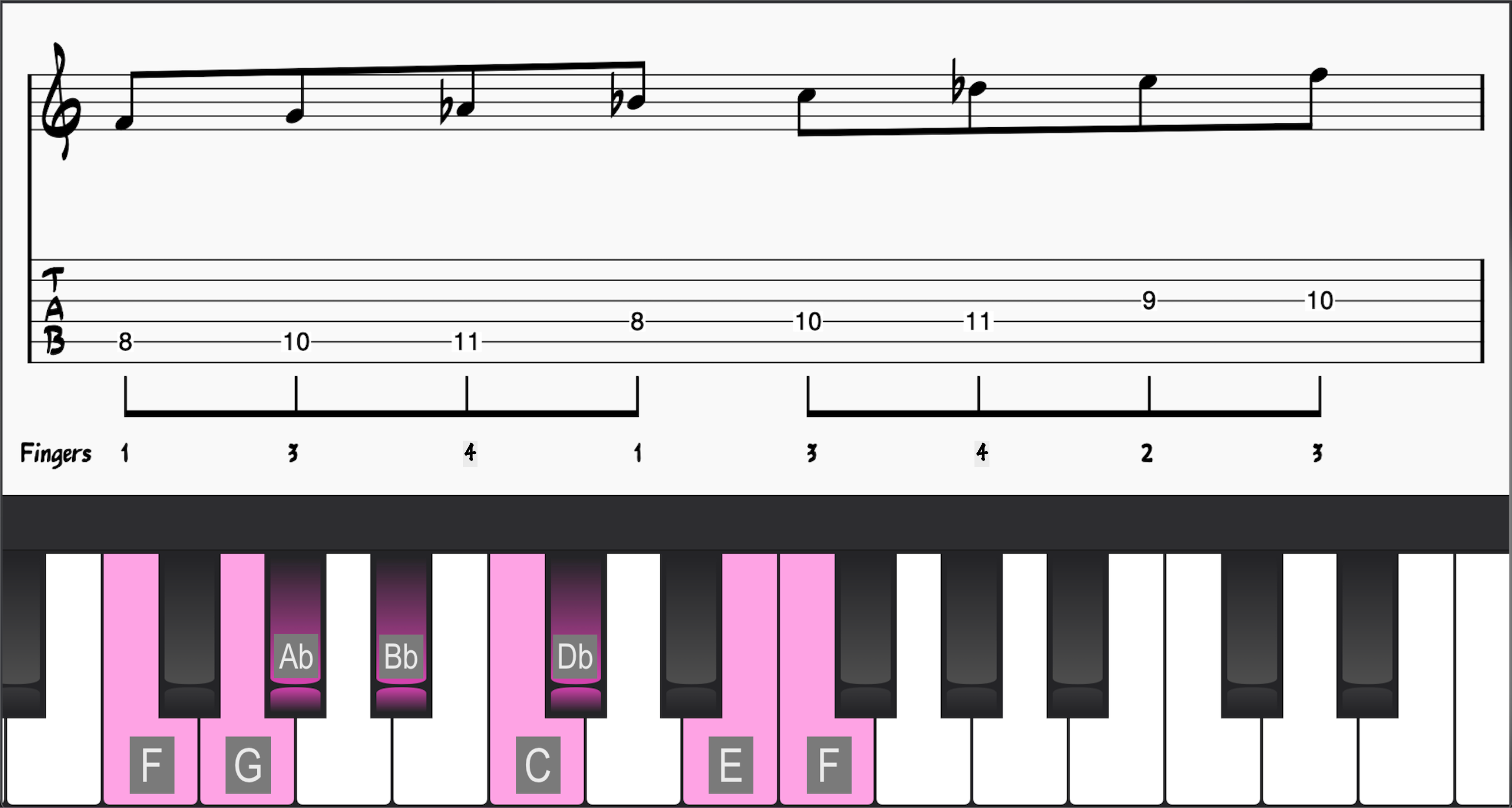
Bb Harmonic Minor Scale
- Bb-C-Db-Eb-F-Gb-A-Bb
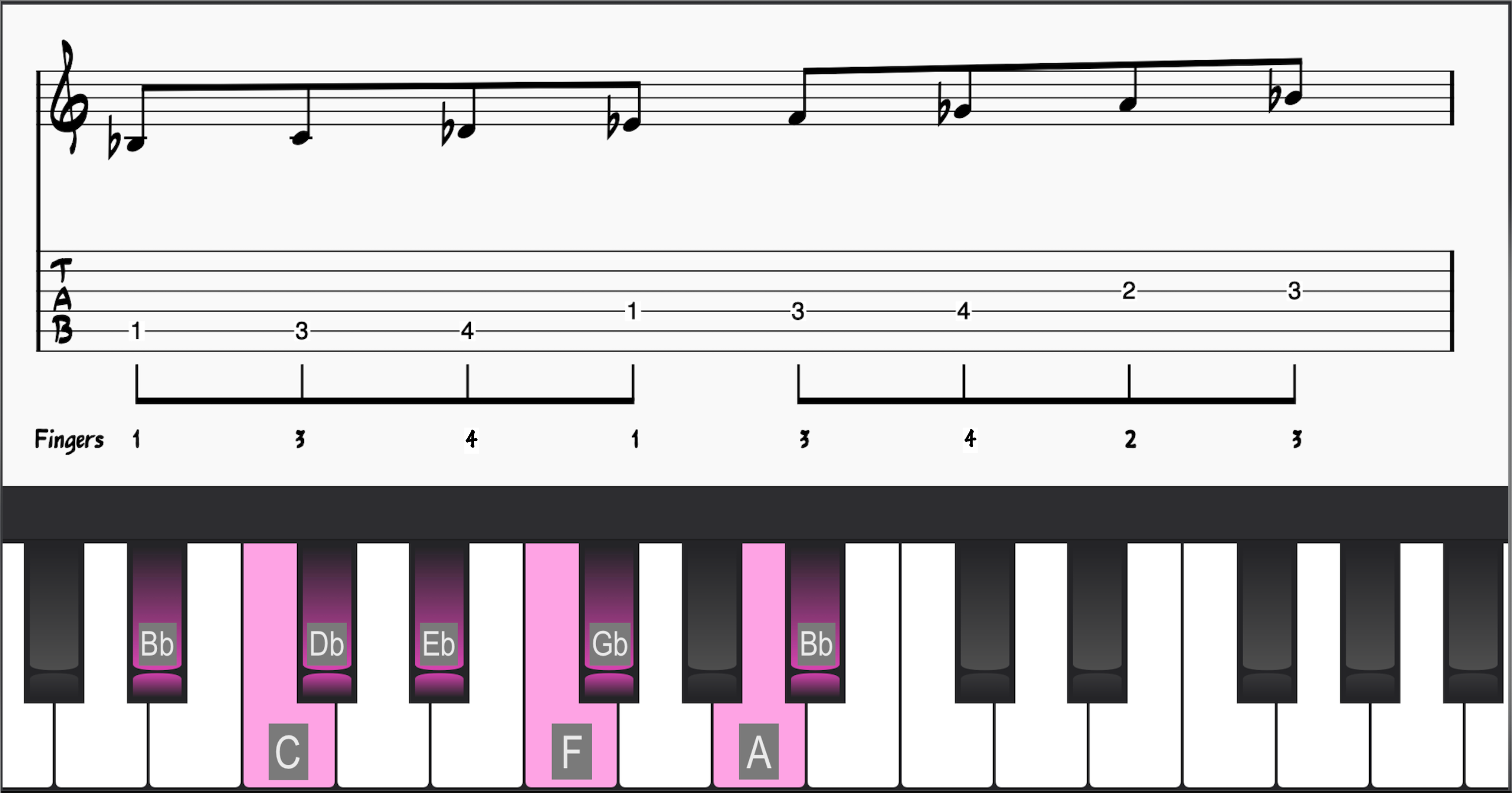
Eb Harmonic Minor Scale
- Eb-F-Gb-Ab-Bb-Cb-D-Eb
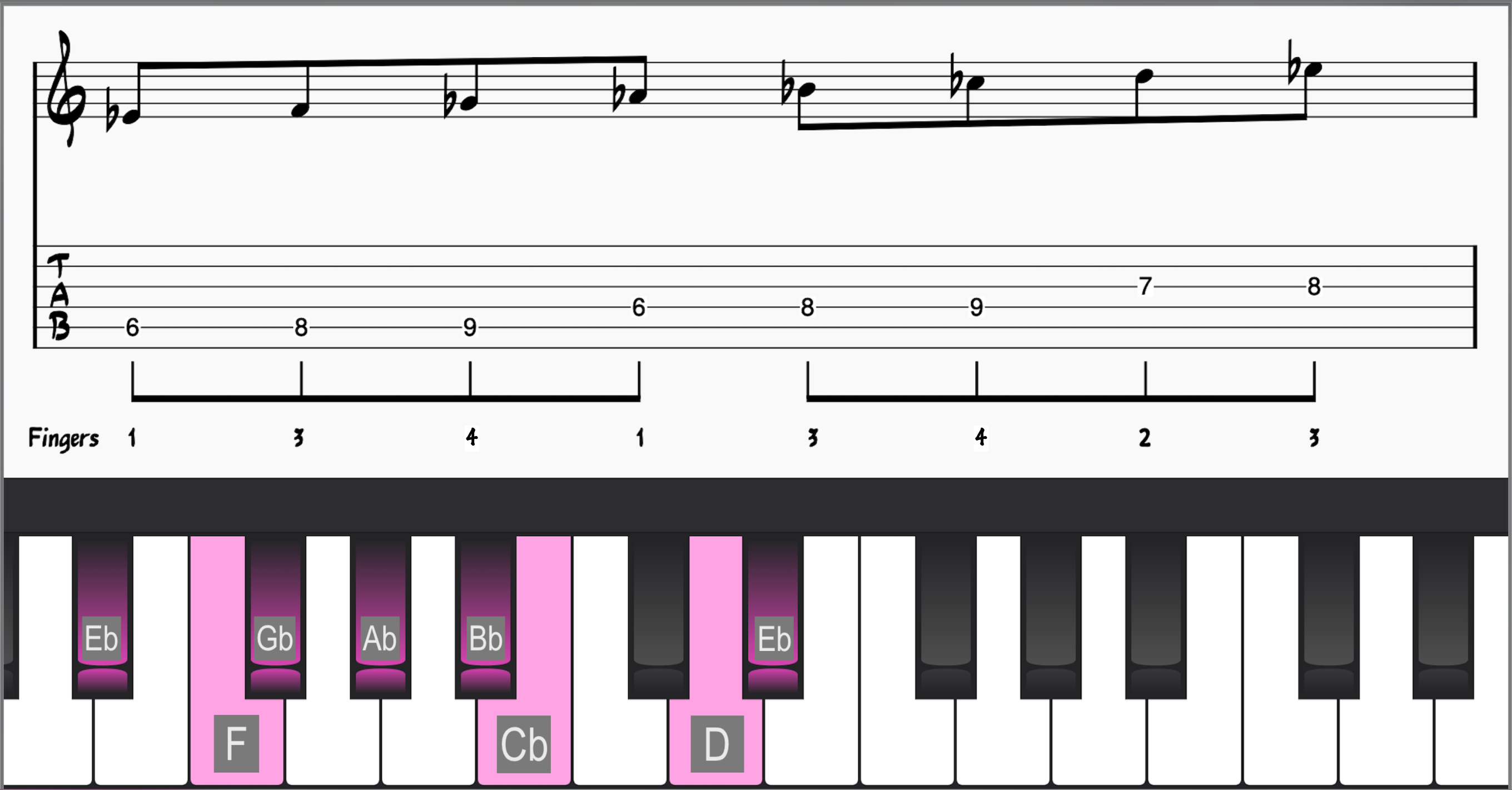
Ab Harmonic Minor Scale
- Ab-Bb-Cb-Db-Eb-Fb-G-Ab

Db Harmonic Minor Scale
- Db-Eb-Fb-Gb-Ab-Bbb-C-Db
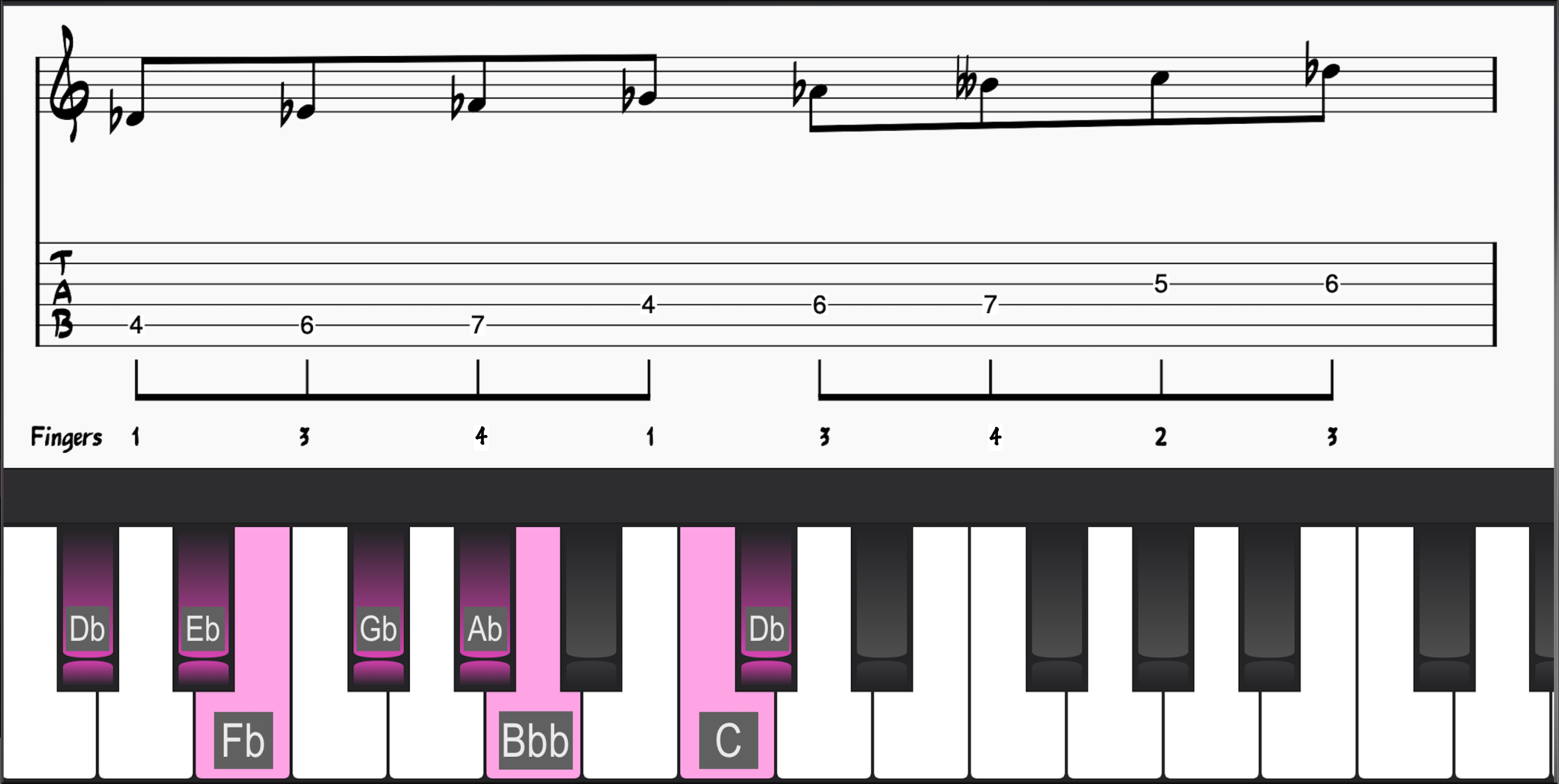
F# Harmonic Minor Scale
- F#-G#-A-B-C#-D-E#-F#
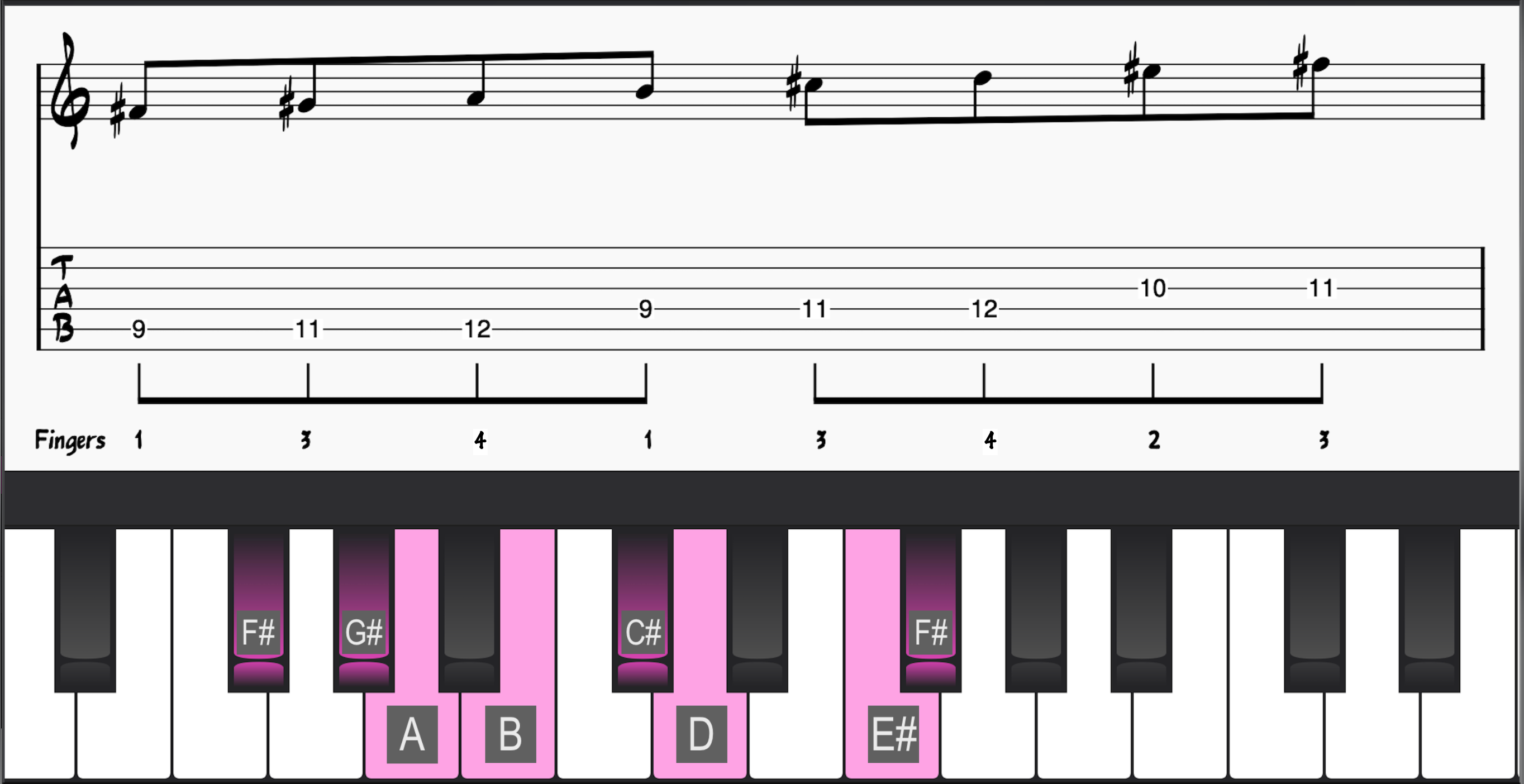
B Harmonic Minor Scale
- B-C#-D-E-F#-G-A#-B
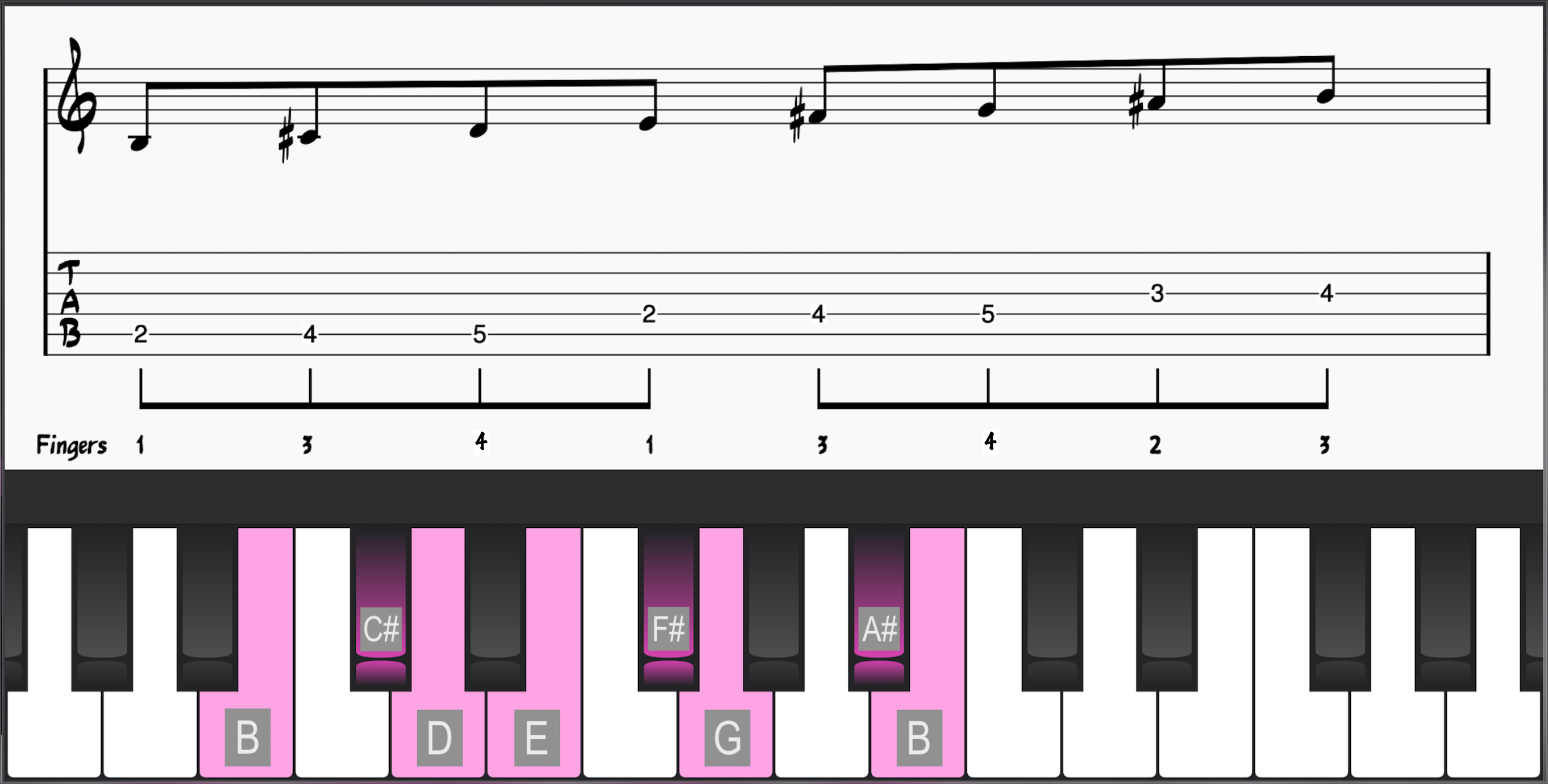
E Harmonic Minor Scale
- E-F#-G-A-B-C-D#-E
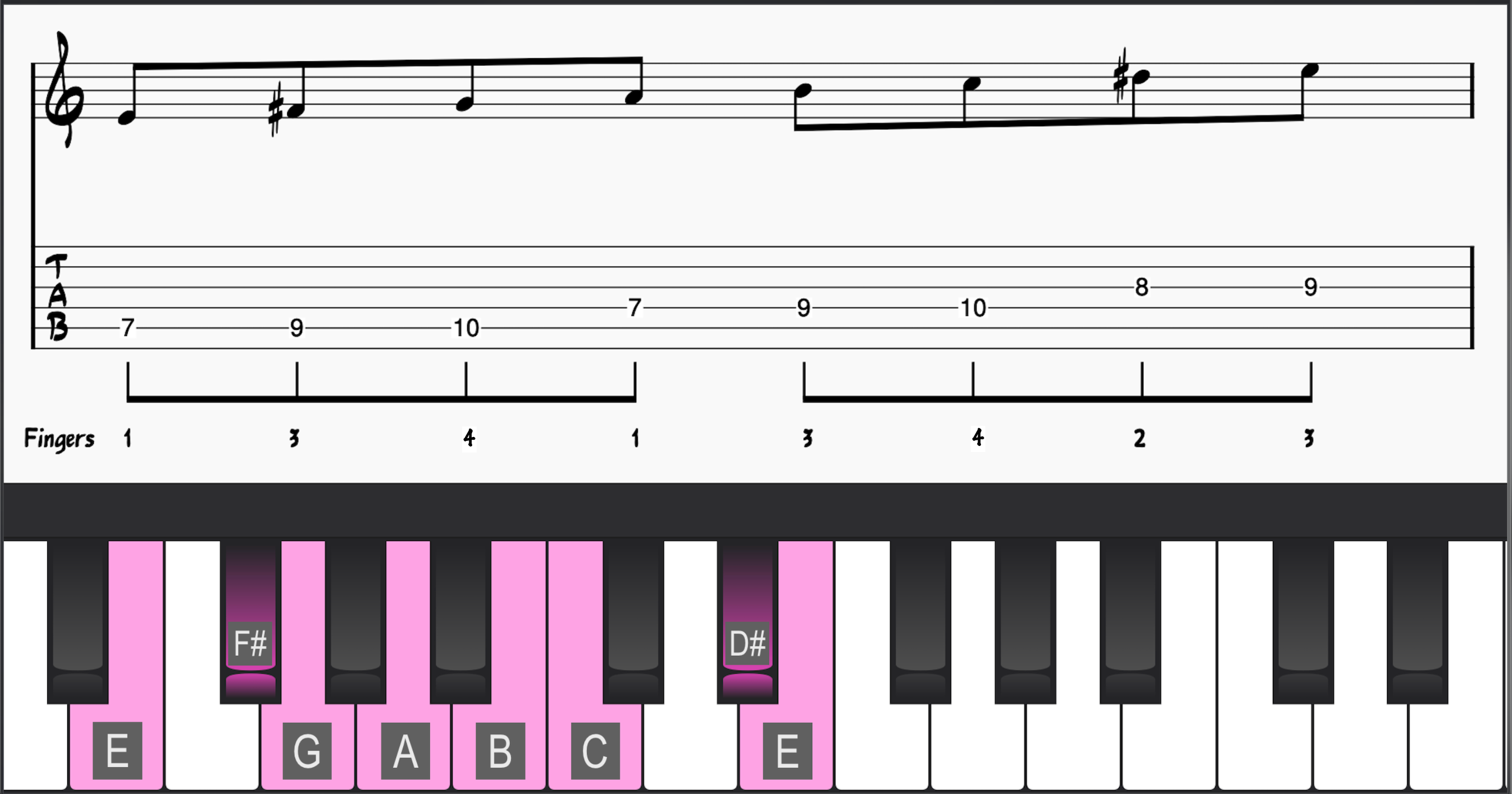
A Harmonic Minor Scale
- A-B-C-D-E-F-G#-A
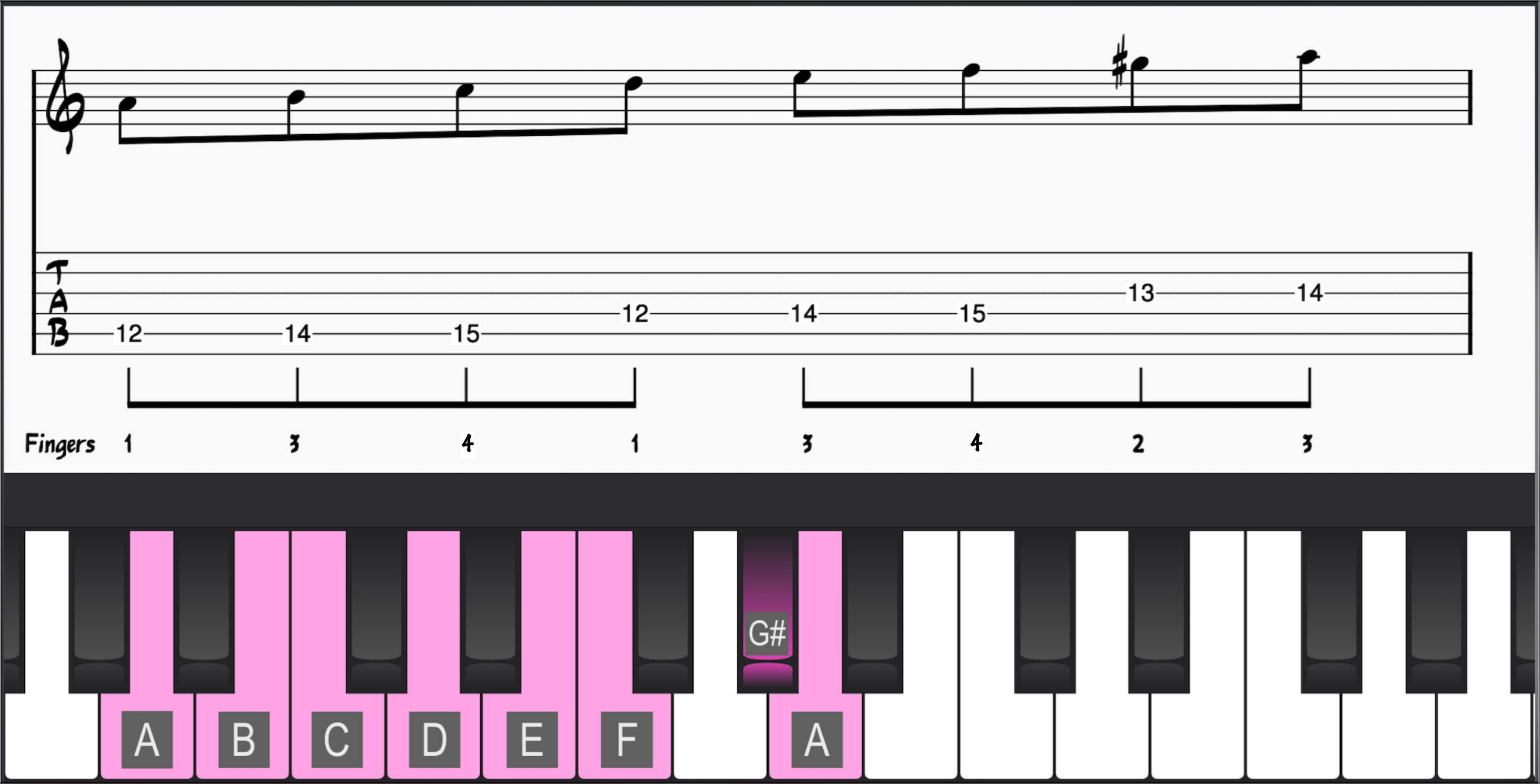
D Harmonic Minor Scale
- D-E-F-G-A-Bb-C#-D
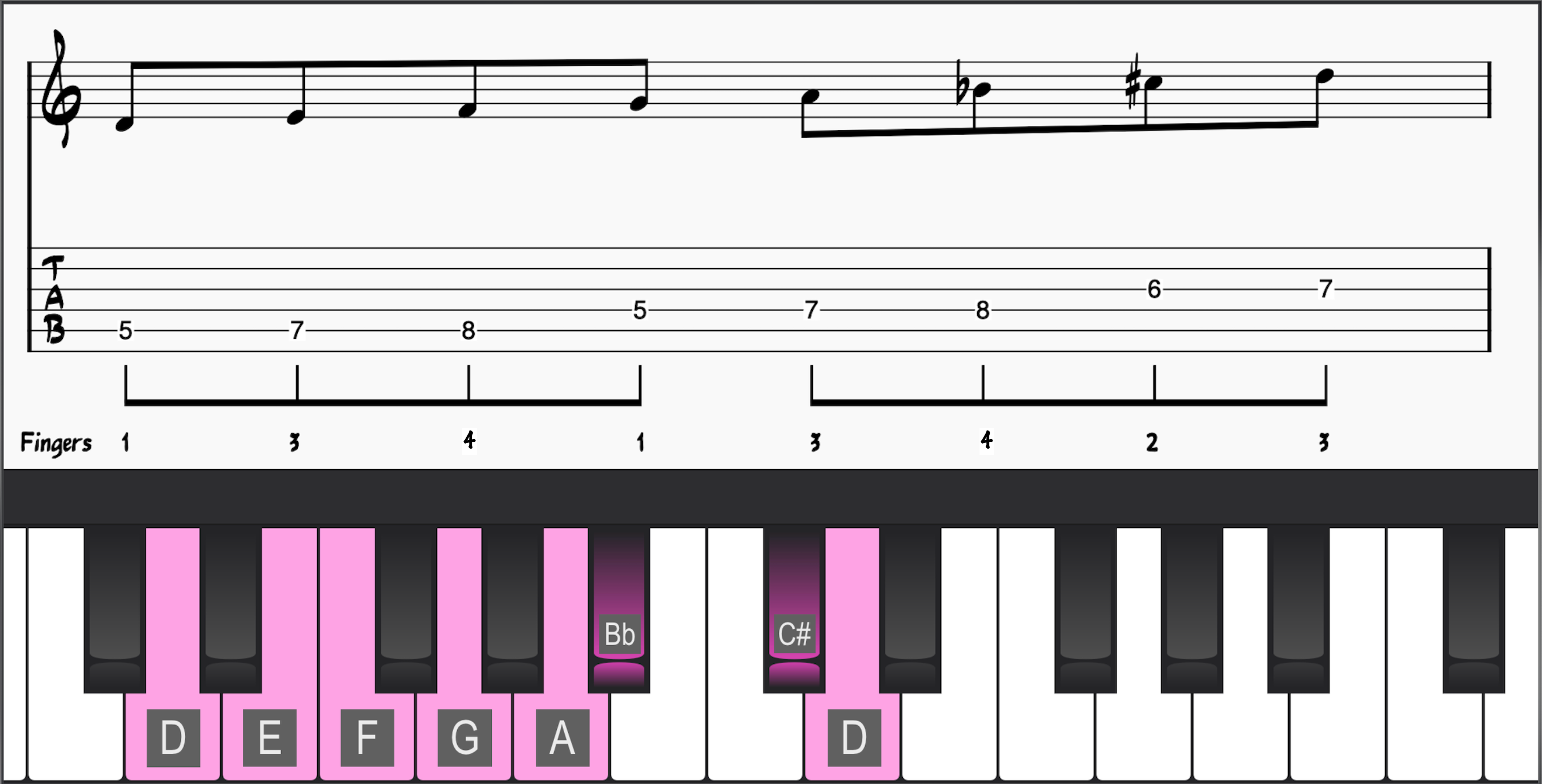
G Harmonic Minor Scale
- G-A-Bb-C-D-Eb-F#-G
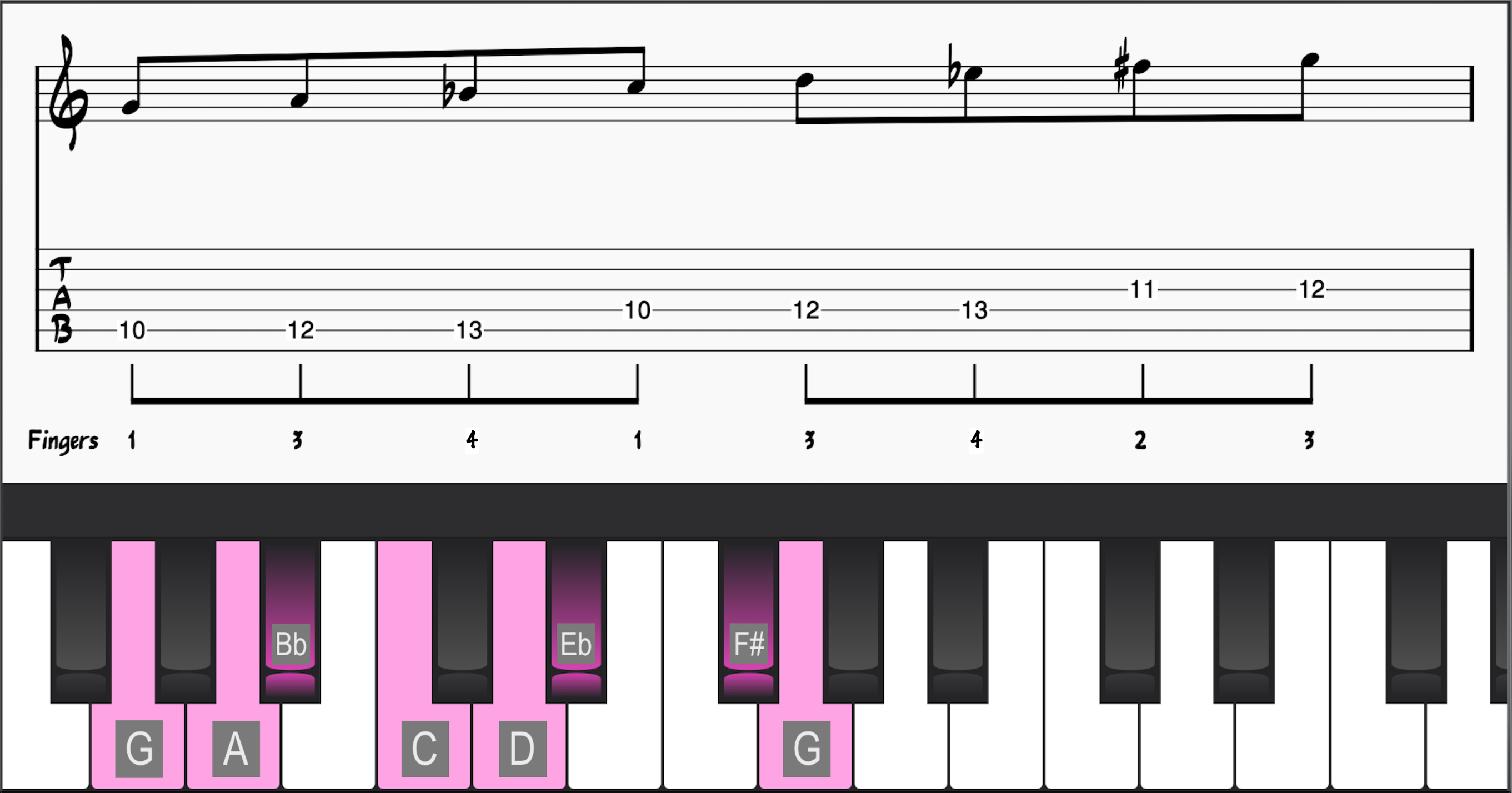
Now that we know the harmonic minor scale in all twelve keys, let’s pick one key and learn all its modes and chords.
BEFORE YOU CONTINUE...
If music theory has always seemed confusing to you and you wish someone would make it feel simple, our free guide will help you unlock jazz theory secrets.

A Harmonic Minor Chord Scale and Seven Modes
To fully utilize harmonic minor, let’s explore the triads and seventh chords we can build from the harmonic minor scale degrees. This will also give us the different modes found within the scale.

Within the harmonic minor scale are major chords, minor chords, diminished triads, and augmented triads. That means there are also a bunch of altered major and minor scales (modes) we can take advantage of when improvising over different pitch environments, including major keys and minor keys!
Let’s look at each mode and chord that can be built from the harmonic minor scale degrees:
1. Aeolian Natural 7
When we take the first note and stack thirds on top of it, we get an A minor triad and an A-(maj7) seventh chord.
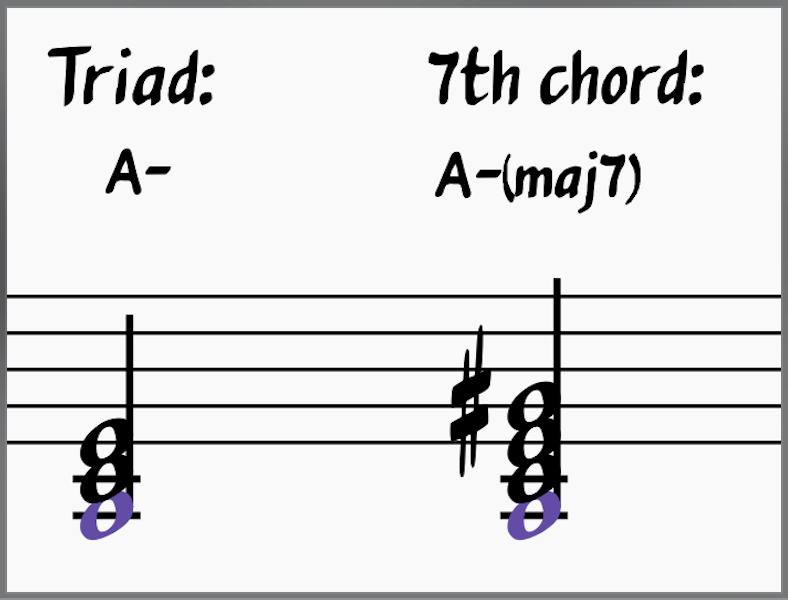
As we’ve seen in previous sections, here’s what it looks like:

2. Locrian ♮6
When we stack thirds on the second scale degree, we get a D-diminished triad and a D-7b5 seventh chord:

The second mode of the harmonic minor scale is called Locrian ♮6. It’s a Locrian scale with a natural 6th instead of a minor 6th.
- B-C-D-E-F-G#-A-B

3. Ionian #5
When we stack thirds on the third scale degree, we get an Eb augmented triad and an Ebmaj7#5 seventh chord:

The third mode of harmonic minor is called Ionian #5. It’s a major scale with the 5th scale degree raised by a half step.
- C-D-E-F-G#-A-B-C

4. Altered Dorian
When we stack thirds on the fourth scale degree, we get an F minor triad and an F-7 seventh chord:
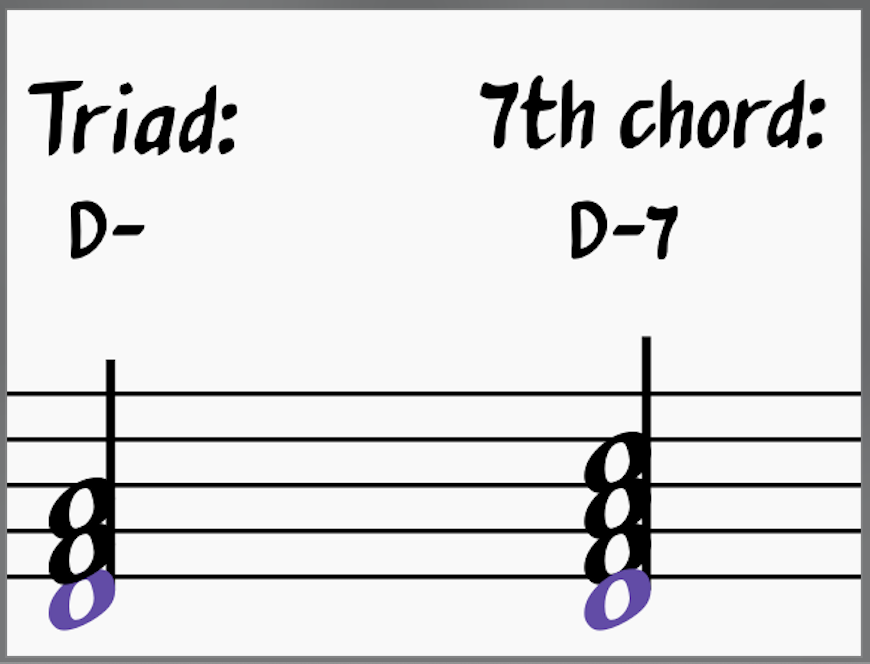
The fourth mode of the harmonic minor scale is called Altered Dorian. It is a Dorian minor scale with a #4 scale degree.
- D-E-F-G#-A-B-C-D

5. Phrygian Dominant
When we stack thirds on the fifth scale degree of C harmonic minor, we get a G major triad and a G7 chord:
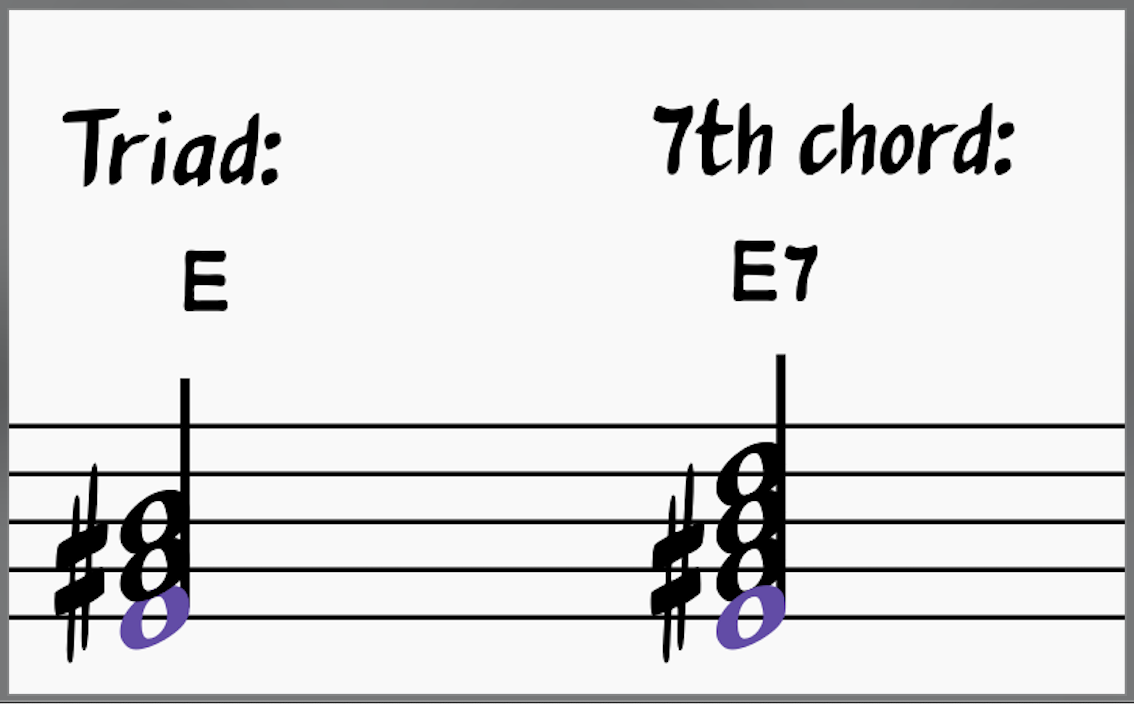
The fifth mode of this minor scale is called Phrygian Dominant, and you can think of it as a Phrygian minor scale with a major third instead of a minor third.

6. Lydian #2
When we stack thirds on the sixth degree, we get an Ab major triad and an Abmaj7 chord:
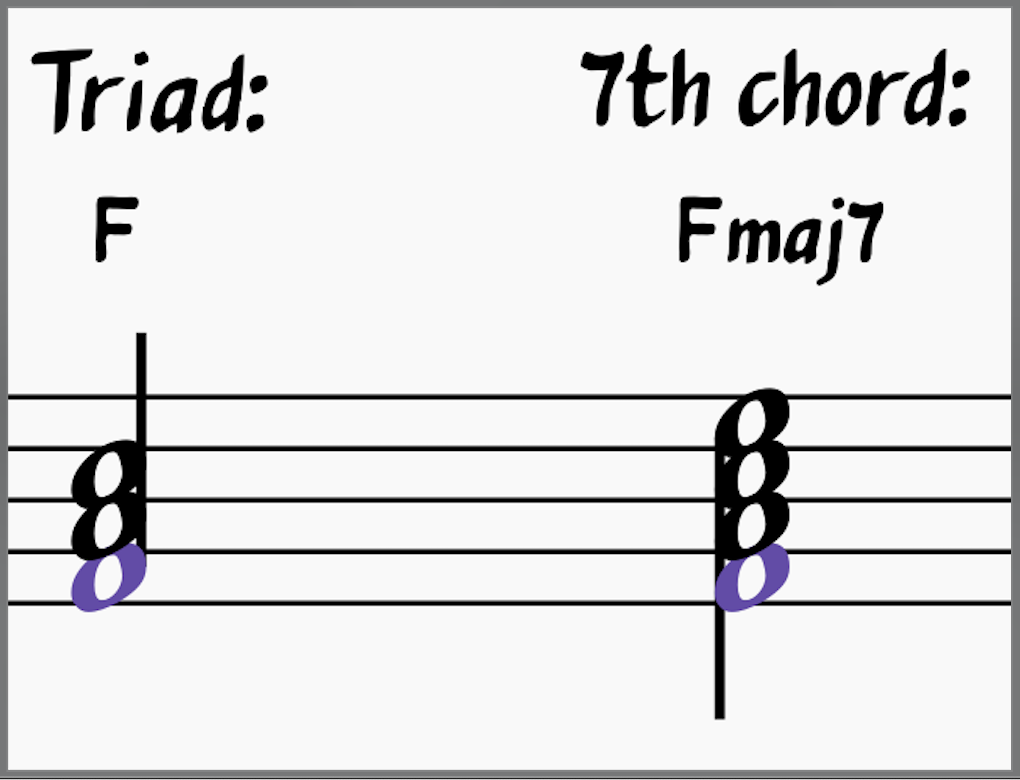
The sixth mode of harmonic minor is called Lydian #2. The easiest way to build it is to take the Lydian mode of the major scale and raise the 2nd note by a half step. This augmented second is equivalent to the minor third.
- F-G#-A-B-C-D-E-F

7. Super-Locrian bb7
Stacking thirds on the last note in C harmonic minor, we get a B-diminished triad and a B fully diminished seventh chord. Harmonic minor is the only minor scale to contain a fully diminished 7th chord. The melodic minor scale and natural minor scale do not have one.

The seventh mode of the C harmonic minor scale is the Super-Locrian bb7 or Altered Diminished scale. Every scale degree is flat, and the seventh degree is double-flat.
- G#-A-B-C-D-E-F-G#
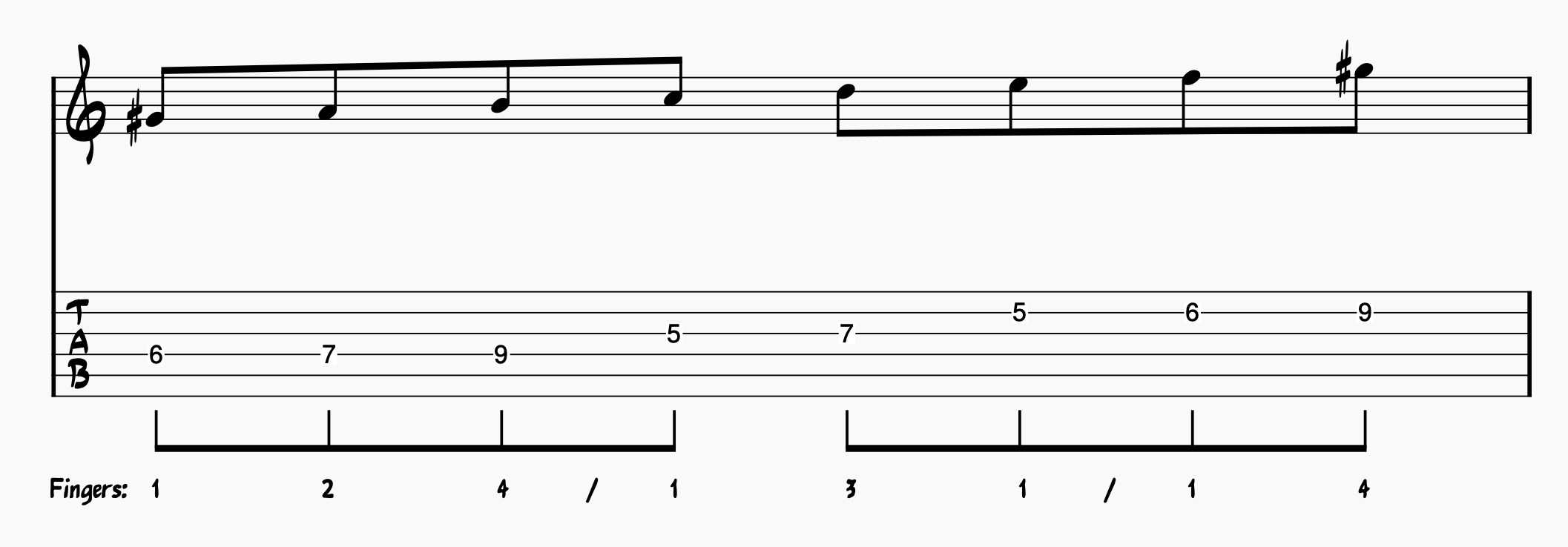
How To Use Harmonic Minor For Solos During Jazz Improvisation
Harmonic minor scales have altered dominant chord tones built directly into their architecture. Because of these altered chord tones, you can play one harmonic minor scale through an entire minor ii-V.
This doesn’t work as well with natural minor scales because the natural minor scale is diatonic and has no altered tones.
Harmonic Minor Scales vs. Natural Minor Scales Over a Minor ii-V
You can use harmonic minor scales over a minor ii-V to target some awesome-sounding altered chord tones over the ii and the V. The scale contains the major third of the V chord and the b9 and b13.

There isn’t as much harmonic excitement when we use natural minor over the whole minor ii-V:

Take Harmonic Minor Scales Through All 12 Keys
Here is a minor ii-V-I line you should take through all 12 keys. We’ll provide the first few, but the rest are up to you!

Here is the same line using the G harmonic minor scale:

Here is the same line using the D harmonic minor scale:

The remaining keys are up to you! Play this lick using the A harmonic minor scale, E harmonic minor scale, and other keys.
Need a Musical Makeover? Join the Learn Jazz Standards Inner Circle.
Ready to take your jazz playing to the next level? The Inner Circle has everything you need to overhaul your jazz playing and make measurable progress. With abundant jazz education resources, you’ll be on your way to crushing it at the next jam session.







